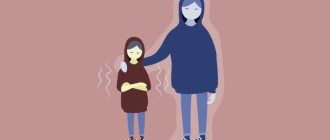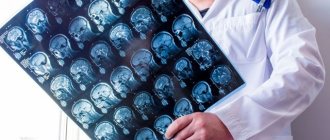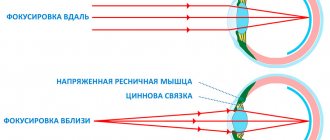Weakness occurs with many diseases, so it is almost impossible for a non-specialist to immediately determine what happened. Weakness in the legs is a very nonspecific symptom that can accompany disturbances in the functioning of many organs and systems. However, such a symptom should never be ignored, since even after heavy physical activity, weakness should go away after a short rest. If weakness in the legs occurs for no apparent reason, much less repeats repeatedly or its severity intensifies, you should consult a doctor immediately.
As mentioned earlier, there are many reasons for weakness in the legs; accordingly, the patient is faced with the question - what specialty should he see a doctor? Most often, such a specialist becomes a neurologist, and a little less often a therapist and an orthopedic traumatologist.
At CELT you can get advice from a neurologist.
- Initial consultation – 3,500
- Repeated consultation – 2,300
Make an appointment
Causes of weakness in the legs
Conventionally, the reasons can be divided into several groups:
- damage to the vascular system;
- muscle damage;
- damage to peripheral nerves;
- diseases of the central nervous system (brain or spinal cord);
- psychological and mental problems;
- joint diseases;
- diseases of the spine;
- intoxication.
During the initial examination and history taking, special attention is paid to the dynamics of the process - whether the weakness arose suddenly or gradually increased, whether it is constant or intermittent, and so on. It is important to find out not only the events that preceded the appearance of weakness in the legs, but also the accompanying symptoms: pain, swelling, convulsive twitching, dizziness, change in skin color, trembling, fever, degree of movement impairment, and the like.
A comparison of clinical and laboratory data allows you to quickly understand which disease of which organ or system caused weakness in the legs. CELT doctors have at their disposal an excellent diagnostic base, with the help of which they can determine not only the disease itself, but also how long it has existed, as well as its severity and prognosis.
Causes of stiffness in the legs
Stiffness in the legs, leading to disruption of habitual motor activity, is familiar to many.
Stiffness in the legs
Physiological physical activity is an integral and necessary part of the life of any person. Physical inactivity itself is a factor in the development of a number of diseases. A decrease in physical activity leads to the following undesirable phenomena:
- Disruption of the normal functioning of the cardiovascular system.
- Obesity.
- Muscle atrophy.
- Creates the basis for the development of osteoarticular pathology.
- Changes in hormonal levels.
Stiffness in the legs can be associated with many reasons, each of which requires a specialized and competent approach. The most common cause of stiffness in the legs in young and active people is venous pathology. When the normal outflow of blood from the lower extremities is disrupted, stagnation processes develop in the legs. Swelling and bursting sensations, pain accompany the symptom of stiffness in the legs. Obviously, the sensations described above will have an extremely negative impact on motor activity.
Our doctors
Pankov Alexander Rostislavovich
Neurologist
40 years of experience
Make an appointment
Novikova Larisa Vaganovna
Neuropathologist, Candidate of Medical Sciences, doctor of the highest category
Experience 39 years
Make an appointment
Circulatory disorders
Vascular diseases of the nervous system, which can result in stroke and heart attack, are becoming more common among patients. In this case, situations of so-called transient ischemic attacks are possible, when a “flickering” of symptoms occurs - weakness occurs acutely, but quickly passes. After such an incident, you cannot be complacent and assume that everything turned out okay. It is necessary to identify the cause of the incident as quickly as possible and take appropriate preventive measures.
Stroke and heart attack can occur not only in the brain, but also in the spinal cord. A spinal stroke that occurs at any level can leave a person disabled or require a long and incredibly labor-intensive recovery. It must be said that due to the structure of the spinal cord, recovery after a spinal stroke is rarely successful, even in comparison with a stroke that affects the brain.
Weakness in the limbs may result from myocardial infarction, in which case gastrointestinal symptoms are often associated - nausea, abdominal pain, bloating. Some forms of heart attack thus remain undiagnosed, since the clinical picture is not typical and “imitates” an acute disease of other organs (for example, acute pancreatitis).
The veins or arteries of the lower extremities may be affected. Chronic venous insufficiency not only reduces physical strength, leads to pain and causes aesthetic problems, but also threatens the formation or separation of a blood clot (which, if the circumstances are unsuccessful, can block the pulmonary artery - pulmonary embolism is often a fatal condition). Blood stagnation also occurs in chronic heart failure, when swelling appears in the legs.
The formation of atherosclerotic plaques in the lumen of the vessel is a common cause of gait disturbance in the elderly. The so-called “intermittent claudication” develops.
Obliterating endarteritis also manifests itself as intermittent claudication, when the lumen of the vessels gradually narrows. Raynaud's disease is manifested by changes in skin color, weakness and swelling, the trigger for which is often hypothermia or frostbite. Menopause and premenstrual syndrome can also cause transient leg weakness.
Dizziness and unsteadiness of gait
Natalia
6744 views
February 14, 2020
I am 30 years old. Height 173, weight 75 kg. It all started with a sharp rise in blood pressure in December 2021. The pressure jumped sharply and reached 180, while my normal pressure was 120/130'80. During this period, one fine morning I could not get out of bed. In the morning, nausea, dizziness, feeling that all the blood in the head has gone. (Indeed, it was easier lying down than standing) They took me to the hospital, they gave me vasodilators (Vinpocetine, Cerecard) that didn’t really help. The vasodilator gave me a severe headache, but the hospital didn’t hear me and continued to drip. There were some fears throughout my stay in the hospital. There is an unreasonable feeling of fear and anxiety inside. She didn’t recognize herself and couldn’t understand what was happening at all. Doctors assumed that my condition was due to instability of the vertebrae in my neck. The vertebrae compress the blood vessels. After 10 days he was discharged home. The condition has improved, but the feeling of disgust still does not go away. There were several serious cases in 2021 when it was impossible to even stand up: the nausea was severe, it was impossible to walk, or even stand. I thought I was going to fall. I walked along the wall. My face went numb. The ambulance arrived: an injection of Mexidol into a vein, and I began to somehow move around. The last such case was six months ago. But the feeling of disgust still doesn’t leave me. Of course, it's not like it was before... When I lie down, all the symptoms go away. Nausea is minimal or absent at all. There is no true dizziness (when objects spin or spin). There is a feeling of faintness, that I am about to fall or step into the abyss. This condition can appear out of nowhere and also disappear. There are days when everything is generally ok, nothing bothers me, there are days when it sways a lot, it’s even hard to stand. There were also headaches, frequent and severe. (7-8 points) Painkillers did not help. Now they have headaches, but not so often. Treated with painkillers. I associated my headaches with the presence of the Mirena intrauterine device (hormonal). They took it off for me almost a month ago, my head became fresher, and the headaches were not so lingering. During this time, here are the studies: MRI of the head, neck (without blood vessels), normal blood count, normal sugar (although in some cases I noticed that it became better if I ate something sweet when I was feeling unwell. I have diabetes in my relatives.) Cholesterol is normal, hormone tests are normal. Ultrasound of neck vessels is normal. X-ray - instability Shop, C3-C4 posteriorly. Gastroscopy - erosive gastritis. Treated. In the past, cholecystectomy. Also, extrasystole has been present since childhood. Mitral valve prolapse 1st degree. (Latest research October 19) Sotahexal was prescribed on an ongoing basis, it helps. A CT scan of the lumbar region was also performed; there is a median hernia l5-s1, spondeloarthrosis. There is pain syndrome. At the moment I am taking betagestin, the feeling of disgust does not go away. Vascular headaches cause headaches, as if everything inside is bursting. Dear doctors, explain to me what is happening. Could instability of the cervical vertebrae affect me like this???? I heard doctors say that the neck has nothing to do with it. Is it so???? I keep skidding and swaying. How long will it take for me to continue living like this???
The question is closed
nausea
dizziness
unsteadiness are similar
Sensory disturbances due to nerve damage
This is the most common disorder in diabetes mellitus - polyneuropathy, which almost inevitably occurs 15 or 20 years after the onset of the disease, but everything can happen much earlier. Numbness, heaviness, and decreased sensitivity appear.
The same disorders occur with funicular myelosis or degenerative disease of the spinal cord, when deep sensitivity is immediately impaired.
Neurologists identify many causes of polyneuropathy - from viruses to chronic alcoholism. Among them are tick bites, cytomegalovirus, tumors, diphtheria, chemical poisoning and much more.
Psychological problems
Emotions influence our lives much more than we realize. The fact is that the body’s reactions are regulated by the autonomic nervous system, another name for which is the autonomic one. This system operates according to its own laws, regardless of our will and desires. Therefore, the body's reactions - heartbeat, breathing, blood circulation, digestion, spasms - practically cannot be regulated by willpower. Our every daily experience, and even more so mental illness, affects the functioning of all organs and systems.
Weakness in the legs occurs with the following disorders:
- panic attack;
- hysteria;
- prolonged stress;
- anxiety disorder;
- depression;
- schizophrenia;
- nervous exhaustion or neurasthenia;
- chronic psychotrauma;
- neurocirculatory dystonia.
If weakness is accompanied by pain
This is exactly the case when treatment for arthrosis of the knee, ankle or hip joint may be necessary. Pain syndrome can be eliminated by intra-articular injections of Noltrex, a synovial fluid substitute, provided that the orthopedist confirms the diagnosis.
If, in addition to pain, the patient complains of cramps, tingling and numbness, the skin on the legs turns blue or pale, other diseases are possible, for example, impaired blood circulation due to varicose veins or peripheral vascular disease. The same symptoms are characteristic of arthritis, bursitis, gout, pinched nerves due to radiculitis of the lumbosacral region, and even flat feet.
Weakness in the legs and pain occur with closed injuries of the lower extremities in athletes
Bone lesions
Weakness and decreased muscle strength in the legs may be the first sign of osteoporosis, or decreased bone mineral density.
Muscle tendons lose support. It is not uncommon for people who constantly use their limbs to suffer from a “stress fracture” of the foot. This happens when a critical mass of microtraumas accumulates from the same type of loads - from running, walking, jumping, jerking. Such injuries occur not only in athletes, but also in people constantly engaged in monotonous physical work.
Some bone tumors develop gradually and imperceptibly, so at first nothing but weakness bothers the person.
Daily overload
A load that exceeds the physiological load for a long time inevitably leads to weakness in the legs.
This is primarily excess weight, when the joints and muscles of the lower extremities bear excessive load for a number of years. Obesity destroys bones, muscles and ligaments very slowly, and it seems to go unnoticed. But if you compare the physical capabilities of people with normal weight and obesity, the comparison will not be in favor of the latter. The third trimester of pregnancy is a test for a woman’s musculoskeletal system, when she is forced to adapt to her growing body weight. Lymphostasis or elephantiasis is another reason for the increased load on the legs.
Pathological causes
Pathologies in the lower extremities most often occur after 50 years of age, and they can be very serious. Most often, this symptom is diagnosed with:
- phlebeurysm;
- osteochondrosis;
- atherosclerosis of the legs, blockage and narrowing of the lumen of blood vessels;
- pinched nerves;
- blood pressure problems.
Diseases of the joints, in which degenerative processes develop in the tissues, are also not uncommon. It is at this age that treatment for arthrosis or osteoarthritis of the knee and hip joint is most often prescribed.
Weakness in the legs also occurs due to diabetes mellitus
Intoxication
Any poisoning or infection causes general poisoning of the body and failures in many systems. Even a common ARVI, not to mention a bacterial infection, is accompanied by general weakness. Sunstroke, harmful working conditions, stale food - everything can lead to weakness, and each reason needs to be dealt with. In many cases, long-term alcoholism is destructive to nerves and muscles.
CELT doctors, who have unique practical experience, will help to accurately determine the cause of the disease.
Make an appointment through the application or by calling +7 +7 We work every day:
- Monday—Friday: 8.00—20.00
- Saturday: 8.00–18.00
- Sunday is a day off
The nearest metro and MCC stations to the clinic:
- Highway of Enthusiasts or Perovo
- Partisan
- Enthusiast Highway
Driving directions










